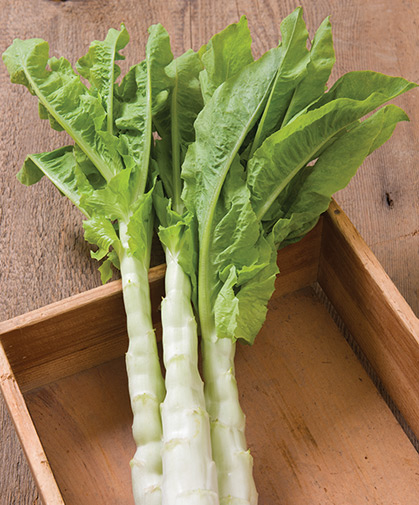Celtuce - Key Growing Information

SCIENTIFIC NAME:
Lactuca sativa var. asparaginaCULTURE:
Celtuce is grown in a similar manner as head lettuce. Sow seed 3-4 weeks before transplanting outdoors in flats or cell-type containers 1/8" deep, about 1/4" apart. For a continuous supply, sow every 2-3 weeks. Shade flats on sunny, warm days, if necessary, to keep the soil surface below 75°F (24°C) until germination. If sowing into flats, transplant about 2 weeks later 1-2" apart in flats, pots, or 3/4-1" cell-type containers. Harden seedlings by reducing water and temperature for 2-4 days before transplanting outdoors. Celtuce plants are hardy to light frost. Transplant 8-12" apart in rows 12-18" apart. If direct seeding, begin sowing in spring as soon as the soil is prepared. The seeds will germinate even at low, 40°F (4°C) soil temperature, but poorly above 75°F (24°C). Sow seeds about 1" apart in rows 12-18" apart or sow in clusters of 3-4 seeds every 8". Cover seeds lightly, about 1/8", firm soil gently, and keep surface moist until emergence in 3-5 days (or longer in cold weather). Thin to 8" apart. DISEASES AND PESTS:
See our selection of insecticides for slug control products. Prevent disease with crop rotation and good sanitation.HARVEST:
Cut the plant when the enlarged stem reaches 8-10" long. To market, strip off all leaves except for the small tuft at the top. Prior to eating, trim or peel off the outer skin to expose the edible central core. The stem pieces may then be stir fried, broiled, or used in salads.AVG. PRECISION SEEDING RATE:
1,000 seeds/220', 1 oz./5,300'. TRANSPLANTS:
Avg. 20,000 plants.SEED SPECS:
SEEDS/OZ.: Avg. 25,250 seeds.PACKET:
500 seeds.


